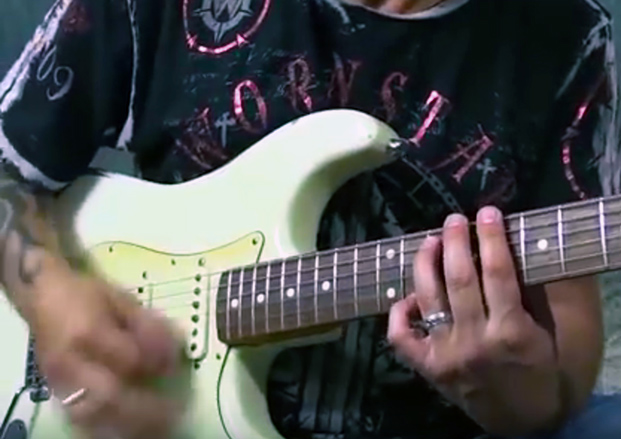The One Blues Chord Every Guitarist Should Know

The 12-bar blues uses common chords found in every genre. But part of the distinct sound of the blues is due to the dominant seven, which gives the chords the distinctive sound and “attitude” we associate with the blues.
In this lesson, Steve Stine shows you how to turn chords you already know into blues chords, including open and barre chords, by adding the dominant seven.
“What you’re going to notice is, just by doing a couple of small things to your chords, all of the sudden your music is going to start sounding more blues-like,” he explains.
Steve starts by showing the three chords of a blues progression in A, playing them in open position, and adds the dominant seven to lend the chords true blues flavor. He then shows the same thing with barre chords. Steve provides all the tablature for the lesson, which you can grab here.
For more of Steve’s lessons, visit his Six String Studios channel at YouTube.
Get The Pick Newsletter
All the latest guitar news, interviews, lessons, reviews, deals and more, direct to your inbox!
Since 1980, Guitar World has been the ultimate resource for guitarists. Whether you want to learn the techniques employed by your guitar heroes, read about their latest projects or simply need to know which guitar is the right one to buy, Guitar World is the place to look.








![Joe Bonamassa [left] wears a deep blue suit and polka-dotted shirt and plays his green refin Strat; the late Irish blues legend Rory Gallagher [right] screams and inflicts some punishment on his heavily worn number one Stratocaster.](https://cdn.mos.cms.futurecdn.net/cw28h7UBcTVfTLs7p7eiLe.jpg)


